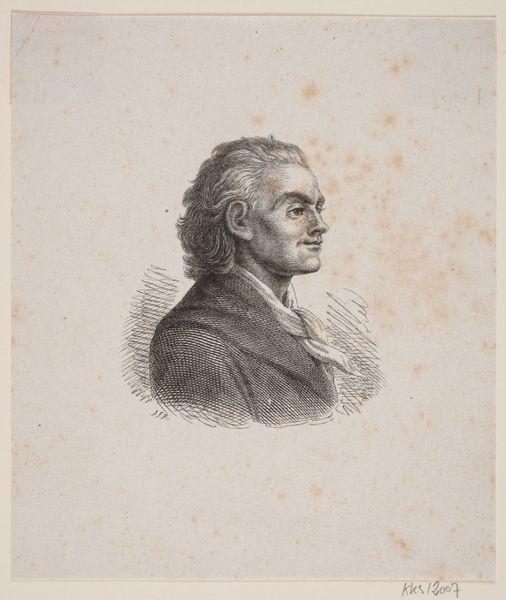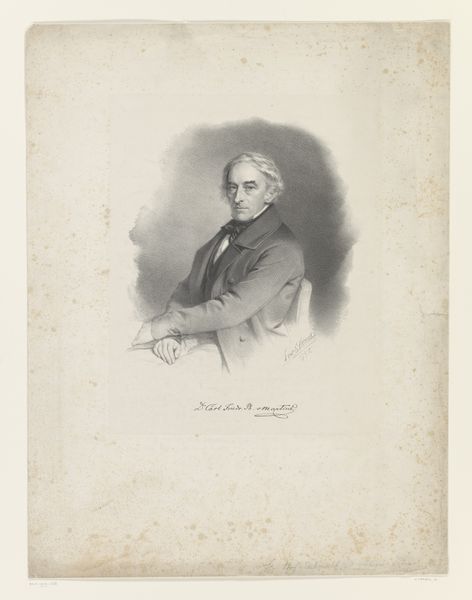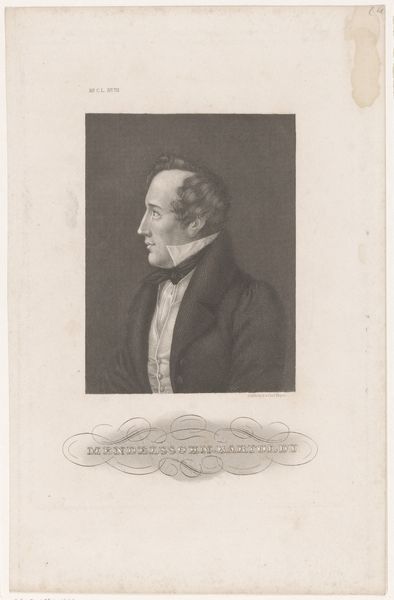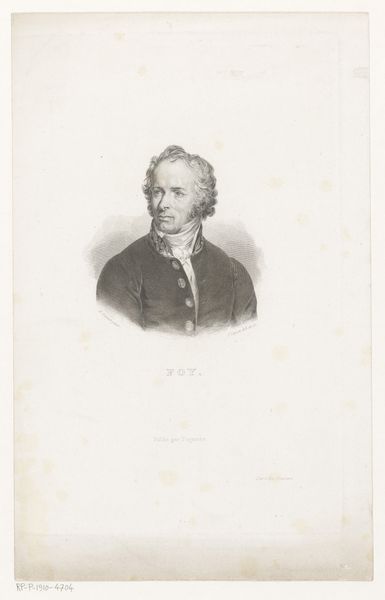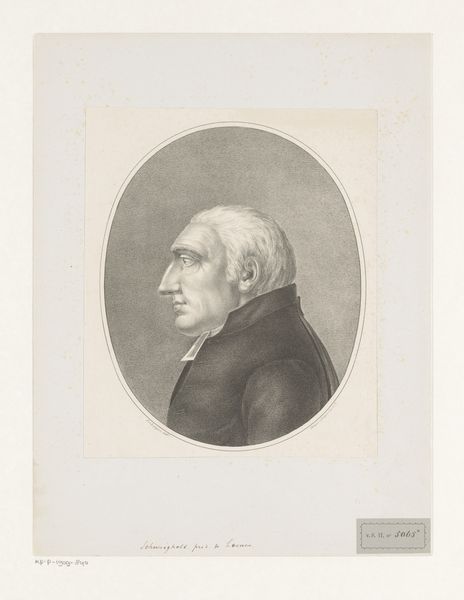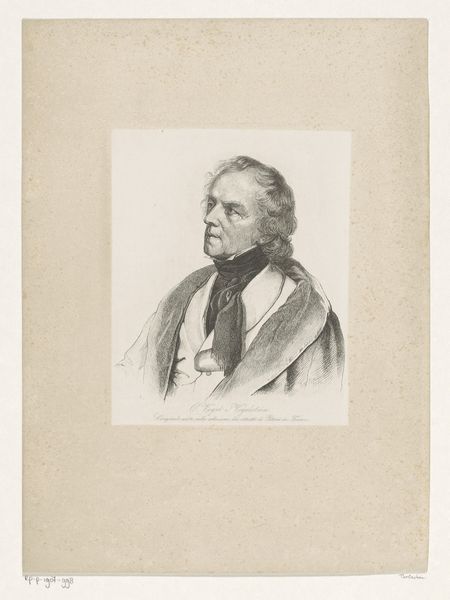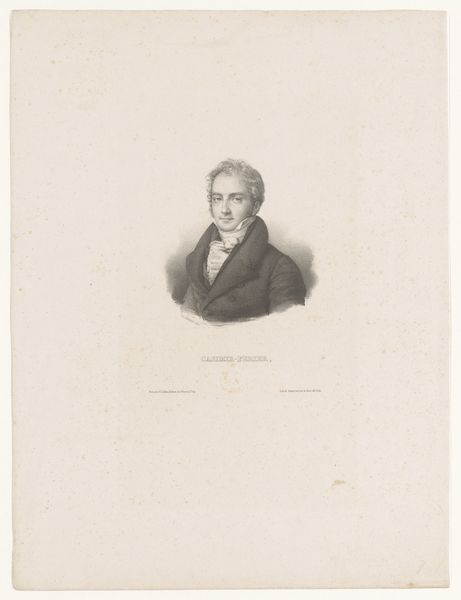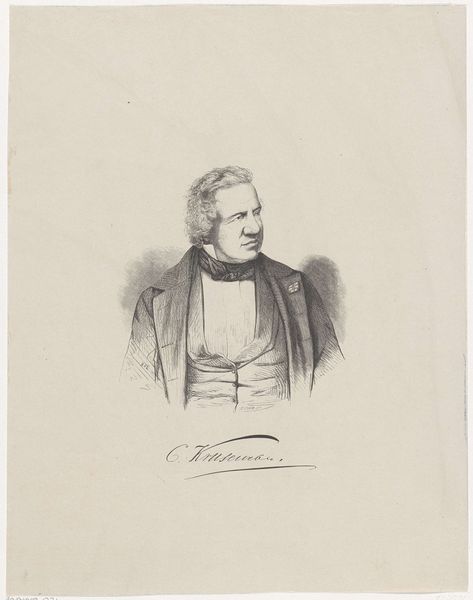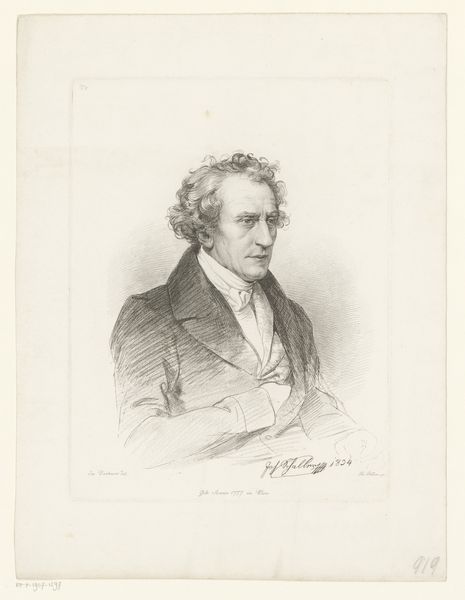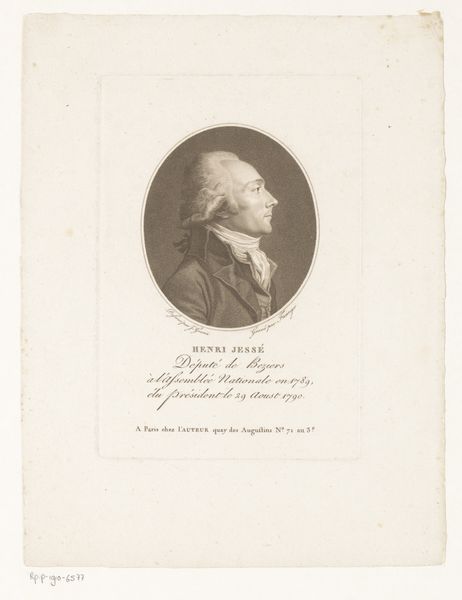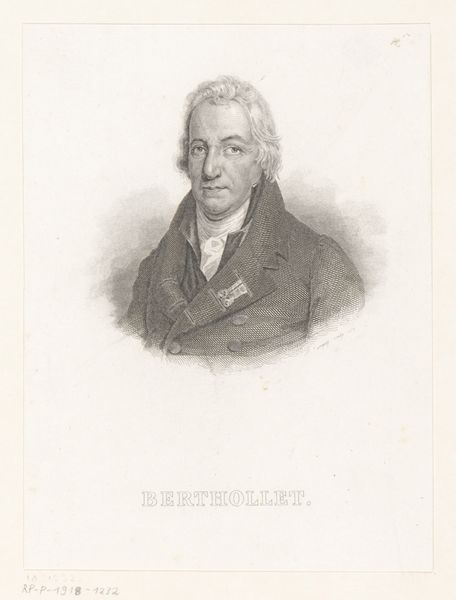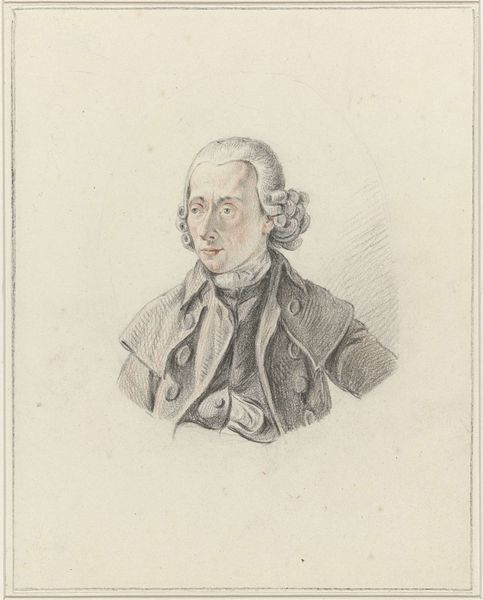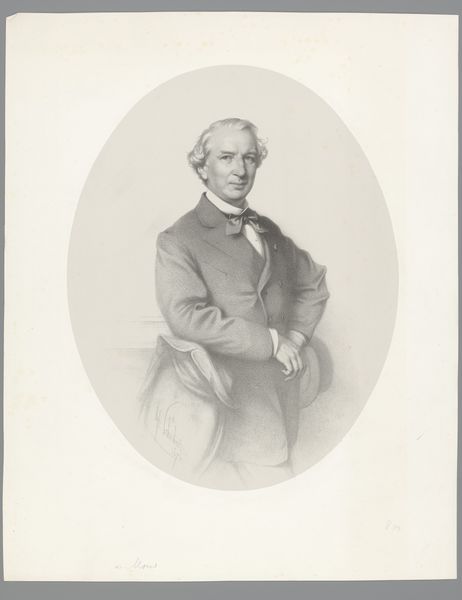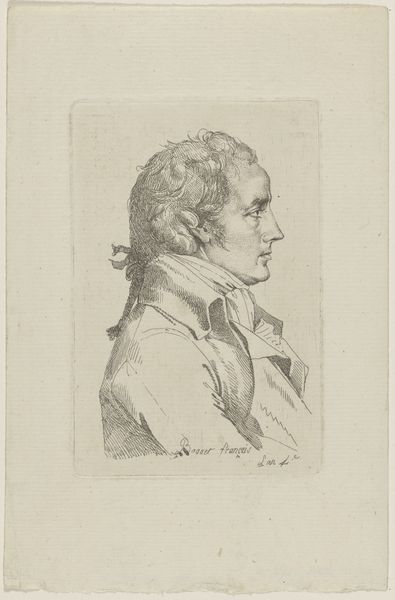
engraving
#
portrait
#
neoclacissism
#
old engraving style
#
portrait reference
#
history-painting
#
engraving
#
realism
Dimensions: height 268 mm, width 176 mm
Copyright: Rijks Museum: Open Domain
Curator: This portrait engraving, dating sometime between 1813 and 1883, depicts Alberto Fortis, a writer and cartographer. The engraver is Giuseppe Fusinati. Editor: My first impression is its delicate, almost ghostly quality. The stark profile against the softly shaded background gives it a very neoclassical feel, while the texture suggests realism. Curator: You've picked up on two very pertinent things: the neoclassical influence, with its emphasis on clean lines and order, but also its roots in Realism with this work's commitment to observed likeness. The engraving process itself would have been labour intensive and required incredible precision and skill, making copies for a public readership. Consider the cultural value of this kind of printed portrait. Editor: Right, it becomes about circulating images, knowledge, and influence. I wonder about the original context this was created for – was it part of a book, a series of notable figures, or a more commercial venture? How were these kinds of engravings distributed and consumed? Curator: Most likely it would have accompanied text or appeared in publications intended to convey status and historical relevance through printed portraits. Fusinati, the artist, aimed to represent not only a physical likeness but a cultural and intellectual weightiness, essential for figures like Fortis. Look at how the materials themselves–the paper and ink– become conveyors of cultural worthiness and solidify that cultural position through repeated reproductions. Editor: Yes, the very act of engraving transforms the man, Alberto Fortis, into a kind of reproducible idea or symbol. And the subtle shading gives him presence but also distances us, as if he's already receding into history. Curator: Precisely. This isn't just about individual portraiture; it's about creating lasting figures for collective memory and understanding, even influencing the social construction of "celebrity". Editor: Thinking about the social aspect in terms of production and reproducibility is more insightful to me than approaching this print from an art history perspective, in particular, because engraving like this facilitated much wider audiences for artworks during the 19th century. Curator: It's remarkable how a work, ostensibly “simple”, reflects layers of history, culture and craftsmanship. Editor: I concur! It provokes valuable reflection on how societies archive and commodify their luminaries.
Comments
No comments
Be the first to comment and join the conversation on the ultimate creative platform.
